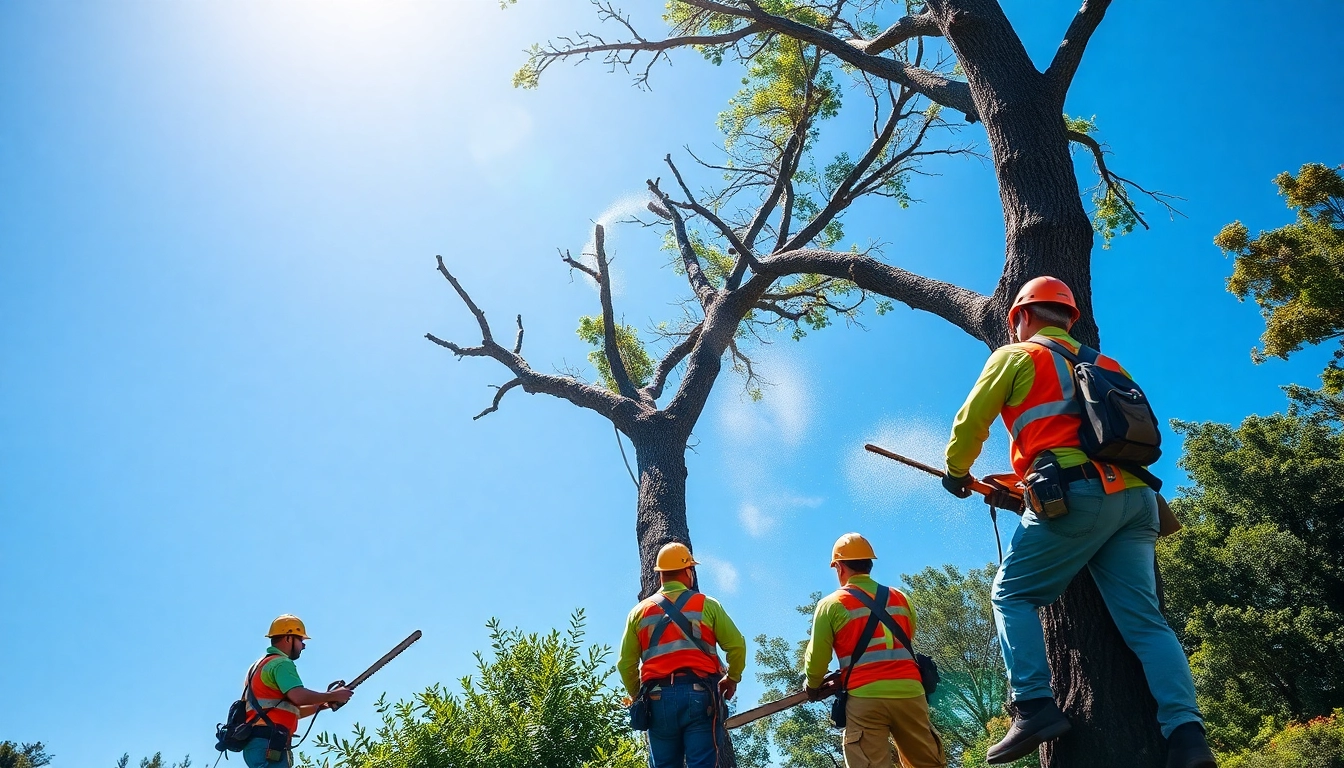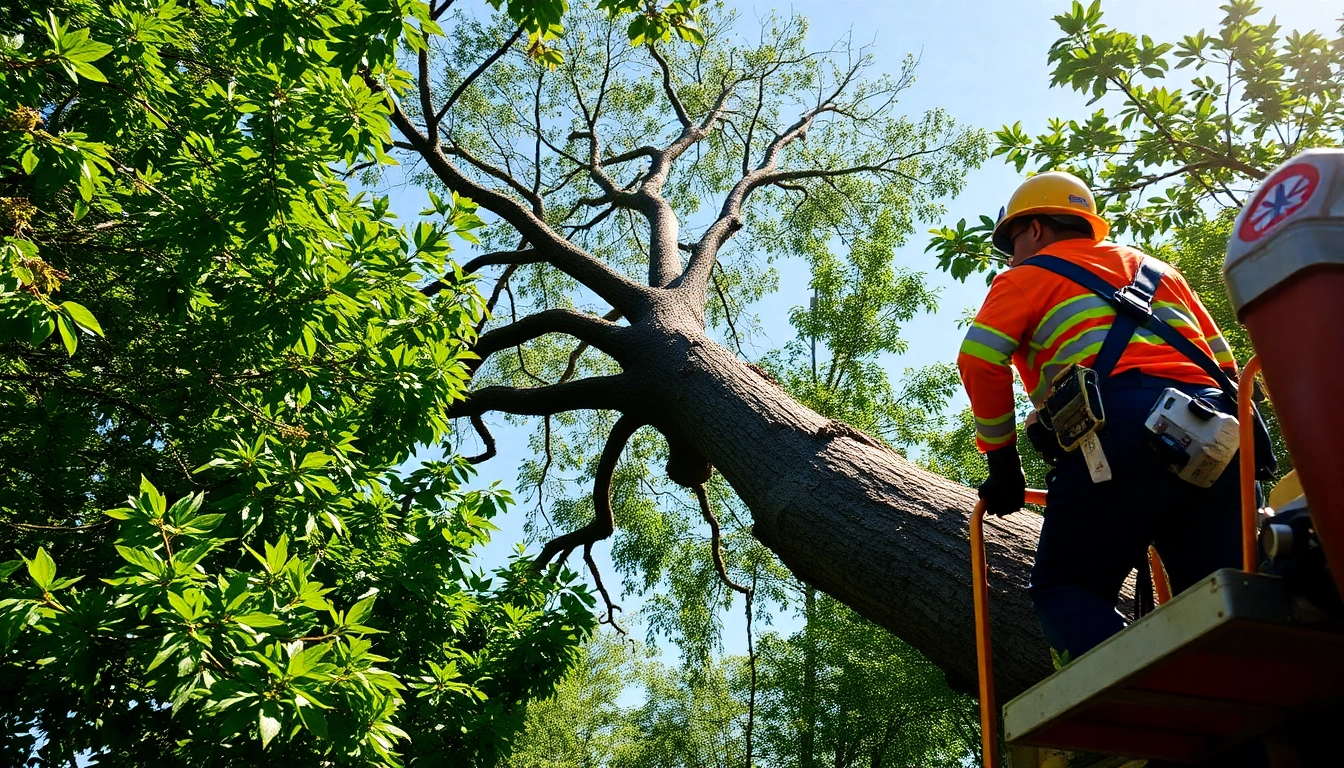Understanding Emergency Tree Service Needs
Tree emergencies can occur at any time, leaving homeowners in a challenging situation where prompt action is necessary. Whether it’s due to severe weather, pest infestations, or simply old age, understanding the need for emergency tree service is essential in maintaining property safety and health. In this article, we will explore what constitutes a tree emergency, common scenarios requiring immediate assistance, and how to assess damage effectively.
What Constitutes a Tree Emergency?
A tree is considered a danger when it poses a significant risk to property, people, or other vegetation. This can include trees that are leaning precariously, branches that have broken off and are hanging dangerously, or root systems that have been compromised. Other indicators of a tree emergency include visible rot, cracks in the trunk, or severe canopy dieback. In any of these cases, immediate action is crucial to mitigate risks and assess ongoing threats to safety.
Common Scenarios Requiring Emergency Assistance
Several situations typically necessitate emergency tree services, including:
- Severe Weather Damage: Storms can cause significant damage to trees, leading to falling branches or uprooted trees.
- Pest Infestation: Insects like bark beetles or invasive species can weaken trees, making them prone to falling.
- Construction Accidents: Trees may be compromised during construction activities, requiring urgent assessment and action.
- Tree Diseases: Conditions such as root rot or canker can threaten tree stability and may need to be addressed immediately.
Assessing the Damage: When to Call for Help
Homeowners should assess the severity of tree damage and determine if emergency services are required. If the tree is leaning, has broken branches hanging over roads or structures, or has visible structural weaknesses, it is vital to contact a professional. Additionally, if the tree has fallen and is obstructing a driveway or access point, immediate intervention is required to restore safety.
Choosing the Right Emergency Tree Service
Selecting a reliable emergency tree service is crucial in ensuring the safety of your property. Not all tree services are created equal, so being aware of key qualifications can make a difference in service quality and outcomes. Here are some guidelines to assist in making a well-informed choice.
Key Qualifications to Look For
When searching for an emergency tree service provider, consider the following qualifications:
- Insurance: A reputable company should have liability insurance and workers’ compensation to protect both the client and their workers.
- Certifications: Look for certified arborists or tree care professionals who have demonstrated expertise and commitment to industry standards.
- Experience: Companies with years of experience are often more adept at handling emergencies, ensuring effective and safe resolutions.
Evaluating Customer Reviews and Testimonials
Researching customer reviews and testimonials can provide insights into the reliability and quality of services offered by tree companies. When evaluating reviews, pay attention to:
- Response time during emergencies.
- Quality of work performed.
- Customer service experiences.
- Value for money.
Platforms like Yelp, Google Reviews, and Angie’s List can be excellent resources for gathering opinions from other customers.
What to Expect from a Professional Service
Upon contacting a professional emergency tree service, homeowners can expect several key services:
- Assessment: A certified expert will evaluate the situation and recommend appropriate action.
- Removal and Cleanup: If necessary, the service will ensure safe removal of hazardous trees and branches and perform cleanup of debris.
- Health Monitoring: Post-removal, many services offer assessments of remaining trees to monitor their health and stability.
Preparing for a Tree Emergency
Preparation is essential for homeowners to effectively respond to tree emergencies. While we cannot predict when something might happen, planning ahead can significantly lessen impact and ensure a swift response.
Safety Protocols Homeowners Should Follow
During a tree emergency, safety is paramount. Homeowners should follow these essential protocols:
- Keep a safe distance from injured trees, as they can pose additional risks.
- Alert neighbors if a tree endangers shared property or common pathways.
- Always contact professionals for inspections and removals—never attempt to handle dangerous areas alone.
Essential Tools to Have on Hand
Preparation also includes having essential tools readily available. Some basic items to keep at hand are:
- First aid kits for minor injuries.
- A clear set of emergency contacts, including local tree services and their contact information.
- Tools like a chainsaw, ropes, and ladders for experienced individuals to use in non-critical situations.
Creating a Tree Emergency Plan
Developing an effective tree emergency plan involves:
- Identifying potential risks on your property.
- Establishing a communication plan with family members regarding emergency contacts.
- Planning escape routes for emergency evacuations if necessary.
Costs Involved in Emergency Tree Services
Understanding the costs associated with emergency tree services ensures that homeowners can budget effectively. Pricing can vary significantly based on a multitude of factors.
Factors Influencing Service Pricing
Several elements impact the cost of emergency tree services, including:
- Size of the tree: Larger trees require more time and equipment to remove.
- Extent of damage: Trees that are partially down may be less costly to remove than completely uprooted trees.
- Location: The accessibility of the site can also influence costs; difficult-to-reach trees may incur higher fees.
How to Get Accurate Estimates
Getting a precise estimate involves several steps:
- Contact multiple services to obtain quotes.
- Request a site visit for an accurate assessment.
- Ask about any additional fees that may apply, such as for debris cleanup or overnight services.
Insurance Considerations for Tree Emergencies
It’s essential to check if your homeowner’s insurance covers tree damage. Many policies provide coverage options for:
- Damage caused by fallen trees.
- Liability if a tree falls and damages a neighbor’s property.
- Costs incurred for tree removal following a storm or natural disaster.
Homeowners should consult their policy documents and speak to their insurance provider for clarity on coverage.
Post-Emergency Steps for Property Owners
After addressing an emergency tree situation, property owners should take several steps to recover and prevent future issues. This section outlines important actions to consider.
Assessing and Managing Tree Health After an Incident
Following any tree emergency, evaluating the remaining trees on your property is crucial. Look for signs of stress, including:
- Discoloration of leaves.
- Decay or fungus on the bark.
- Unusual leaning or branch fall.
Professional tree care services can provide thorough assessments and recommend treatments for affected trees.
Preventative Measures to Avoid Future Emergencies
To avoid future emergencies, property owners should:
- Regularly inspect trees for health and stability.
- Schedule professional assessments and necessary trimming before storm season.
- Be proactive about pests and diseases impacting tree health.
When to Schedule Regular Tree Maintenance
Regular tree maintenance should be scheduled at least once a year or more frequently depending on geographical location and tree species. Key factors include:
- Tree age and species growth patterns.
- Local climate conditions that may impact tree health.
- Historic locations or records of tree incidents on the property.
Consulting with a professional arborist can help determine the best maintenance schedule for your unique landscape.



